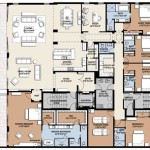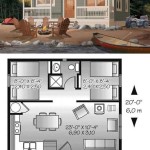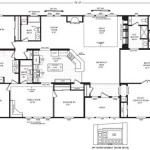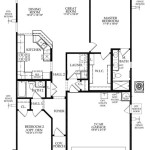
Dealer floor planning, also known as wholesale floor plan financing, is a financing arrangement between a lender (usually a bank or specialized finance company) and an automobile dealer. It involves the lender providing a line of credit to the dealer, secured by the dealer’s inventory of new and used vehicles.
This financing enables dealers to acquire and maintain a sufficient inventory of vehicles to meet customer demand. Without floor planning, dealers would have to purchase vehicles outright, which can be a significant financial burden and limit their ability to maintain a diverse and competitive inventory.
Moving forward, this article will delve deeper into the mechanics of dealer floor planning, including its benefits, costs, and various types. We will also explore how dealers can optimize their use of floor planning to maximize their profits and enhance their operations.
Here are 8 important points about dealer floor planning:
- Provides financing for vehicle inventory
- Secured by dealer’s inventory
- Enables dealers to maintain diverse inventory
- Improves cash flow and liquidity
- Can be flexible and customizable
- Involves periodic interest payments
- May include additional fees or charges
- Requires careful management to optimize profits
Dealer floor planning is an essential financial tool for automobile dealers, allowing them to acquire and maintain a sufficient inventory of vehicles to meet customer demand while managing their cash flow and liquidity.
Provides financing for vehicle inventory
One of the most important functions of dealer floor planning is to provide financing for a dealer’s inventory of vehicles. This financing allows dealers to acquire new and used vehicles from manufacturers, wholesalers, or other sources without having to pay for them upfront. This is particularly important for dealers who may not have the financial resources to purchase a large number of vehicles outright.
The lender will typically advance the dealer a percentage of the wholesale value of the vehicles, which can range from 70% to 100%. The dealer can then use these funds to purchase vehicles and add them to their inventory. The lender retains a security interest in the vehicles until the loan is repaid.
Floor plan financing is a revolving line of credit, which means that the dealer can borrow against the value of their inventory as needed. This allows dealers to maintain a constant flow of inventory without having to reapply for financing each time they purchase a new vehicle.
Overall, dealer floor planning provides dealers with a flexible and cost-effective way to finance their vehicle inventory. It allows them to acquire and maintain a diverse and competitive inventory, which can help them to increase sales and profits.
Secured by dealer’s inventory
Dealer floor planning is secured by the dealer’s inventory of vehicles. This means that the lender has a security interest in the vehicles until the loan is repaid. If the dealer defaults on the loan, the lender can repossess and sell the vehicles to recover the outstanding balance.
The security interest is typically perfected by filing a financing statement with the appropriate government agency. This gives the lender priority over other creditors in the event of the dealer’s bankruptcy or insolvency.
The lender will typically require the dealer to maintain a certain level of inventory coverage. This means that the dealer must have a sufficient number of vehicles in stock to cover the outstanding loan balance. If the dealer’s inventory falls below the required level, the lender may require the dealer to purchase additional vehicles or reduce the loan balance.
The security interest in the dealer’s inventory provides the lender with a significant degree of protection in the event of the dealer’s default. However, it is important to note that the lender’s security interest is not absolute. There are a number of exceptions to the lender’s security interest, including:
- Vehicles that are sold to customers
- Vehicles that are subject to a prior security interest
- Vehicles that are exempt from seizure under state law
Overall, the security interest in the dealer’s inventory is an important part of dealer floor planning. It provides the lender with a significant degree of protection in the event of the dealer’s default, while also allowing the dealer to maintain a revolving line of credit to finance their vehicle inventory.
Enables dealers to maintain diverse inventory
One of the key benefits of dealer floor planning is that it enables dealers to maintain a diverse inventory of vehicles. This is important for a number of reasons:
- Meet customer demand: A diverse inventory allows dealers to meet the needs of a wider range of customers. This is especially important in markets where there is a high demand for a variety of vehicle types, such as sedans, SUVs, trucks, and luxury vehicles.
- Increase sales: A diverse inventory can help dealers to increase sales by providing customers with more options to choose from. Customers are more likely to purchase a vehicle from a dealer that has a wide selection of vehicles that meet their needs.
- Reduce competition: Dealers with a diverse inventory are less likely to compete directly with each other. This is because they can offer customers a wider range of vehicles to choose from, which can make it more difficult for competitors to win over customers.
- Improve profitability: A diverse inventory can help dealers to improve their profitability by allowing them to sell vehicles at a higher margin. This is because customers are more likely to pay a premium for a vehicle that is not readily available from other dealers.
Overall, dealer floor planning enables dealers to maintain a diverse inventory, which can help them to meet customer demand, increase sales, reduce competition, and improve profitability.
Improves cash flow and liquidity
Dealer floor planning can significantly improve a dealer’s cash flow and liquidity. This is because it allows dealers to acquire and maintain a large inventory of vehicles without having to pay for them upfront. Instead, the dealer only pays interest on the outstanding loan balance, which can be significantly lower than the cost of purchasing the vehicles outright.
The improved cash flow and liquidity can provide dealers with a number of benefits, including:
- Increased purchasing power: Dealers with improved cash flow can purchase more vehicles, which can help them to meet customer demand and increase sales.
- Reduced reliance on external financing: Dealers with improved cash flow can reduce their reliance on external financing, such as bank loans or lines of credit. This can save dealers money on interest payments and fees.
- Improved ability to withstand economic downturns: Dealers with improved cash flow and liquidity are better able to withstand economic downturns. This is because they have a financial cushion to fall back on in the event of a decline in sales.
Overall, dealer floor planning can provide dealers with a number of financial benefits, including improved cash flow and liquidity. This can help dealers to increase sales, reduce costs, and improve their overall financial stability.
Here is an example of how dealer floor planning can improve a dealer’s cash flow:
Let’s say a dealer purchases a vehicle for $20,000. The dealer finances the vehicle through a floor plan lender, which advances the dealer 80% of the wholesale value of the vehicle, or $16,000. The dealer then sells the vehicle to a customer for $22,000.
Without floor plan financing, the dealer would have to pay for the vehicle upfront, which would reduce their cash flow by $20,000. However, with floor plan financing, the dealer only has to pay interest on the outstanding loan balance of $4,000. This frees up $16,000 in cash flow, which the dealer can use to purchase additional vehicles or invest in other areas of their business.
Can be flexible and customizable
Dealer floor planning is a flexible and customizable financing solution that can be tailored to the specific needs of each dealer. Lenders offer a variety of loan terms and conditions, including:
- Loan amount: The loan amount can be based on a percentage of the wholesale value of the dealer’s inventory, typically ranging from 70% to 100%.
- Loan term: The loan term can vary from a few months to several years, depending on the dealer’s needs.
- Interest rate: The interest rate on a floor plan loan is typically based on the prime rate plus a margin. The margin will vary depending on the dealer’s creditworthiness and the size of the loan.
- Fees: Lenders may charge a variety of fees, including origination fees, documentation fees, and late payment fees.
In addition to the loan terms and conditions, dealers can also customize their floor plan financing by choosing from a variety of features and options, such as:
- Line of credit: A line of credit allows dealers to borrow against the value of their inventory as needed. This is a flexible option that allows dealers to manage their cash flow and inventory levels more effectively.
- Fixed rate financing: Fixed rate financing locks in the interest rate for the term of the loan. This can provide dealers with peace of mind and protect them from rising interest rates.
- Seasonal financing: Seasonal financing is designed to meet the needs of dealers who experience seasonal fluctuations in their sales. This type of financing can provide dealers with additional funds during peak sales periods.
Overall, dealer floor planning is a flexible and customizable financing solution that can be tailored to the specific needs of each dealer. Lenders offer a variety of loan terms, conditions, features, and options to choose from, which allows dealers to find the best financing solution for their business.
Here is an example of how a dealer can customize their floor plan financing:
Let’s say a dealer sells a lot of high-end vehicles, which typically have a higher wholesale value than lower-end vehicles. The dealer could negotiate with their lender to get a higher advance rate on their floor plan loan, such as 90% of the wholesale value. This would give the dealer more cash flow to purchase high-end vehicles and grow their business.
Involves periodic interest payments
Dealer floor planning involves periodic interest payments, which are typically made monthly or quarterly. The interest rate on a floor plan loan is typically based on the prime rate plus a margin. The margin will vary depending on the dealer’s creditworthiness and the size of the loan.
- Interest is calculated on the outstanding loan balance: This means that as the dealer sells vehicles and reduces their loan balance, the amount of interest they pay each month will also decrease.
- Interest payments are typically due on a specific date each month or quarter: Dealers should make sure to make their interest payments on time to avoid late payment fees.
- Late payment fees can be significant: Lenders may charge a late payment fee of 5% or more of the overdue interest payment. Late payment fees can quickly add up, so it is important to make sure that interest payments are made on time.
- Interest payments are tax deductible: Dealers can deduct interest payments on their floor plan loan from their taxable income. This can save dealers a significant amount of money on taxes.
Overall, dealer floor planning involves periodic interest payments. It is important for dealers to understand how interest is calculated and when payments are due to avoid late payment fees and maximize their tax savings.
May include additional fees or charges
In addition to interest payments, dealer floor planning may also include a number of additional fees or charges. These fees can vary depending on the lender and the specific terms of the loan agreement. Some of the most common fees and charges include:
- Origination fee: An origination fee is a one-time fee that is charged when the loan is first funded. The origination fee is typically a percentage of the loan amount, ranging from 1% to 5%.
- Documentation fee: A documentation fee is a one-time fee that covers the cost of preparing and processing the loan . The documentation fee is typically a flat fee, ranging from $100 to $500.
- Late payment fee: A late payment fee is a fee that is charged if the dealer fails to make an interest payment on time. The late payment fee is typically a percentage of the overdue interest payment, ranging from 5% to 10%.
- Prepayment penalty: A prepayment penalty is a fee that is charged if the dealer pays off the loan early. The prepayment penalty is typically a percentage of the remaining loan balance, ranging from 1% to 5%.
Dealers should carefully review the loan agreement and fee schedule before signing up for a dealer floor plan loan. It is important to understand all of the fees and charges that may be associated with the loan so that there are no surprises down the road.
Here is an example of how additional fees and charges can impact the cost of a dealer floor plan loan:
Let’s say a dealer takes out a $100,000 dealer floor plan loan with an interest rate of 5%. The loan has a term of one year and the dealer is required to make monthly interest payments.
In addition to the interest payments, the dealer is also charged the following fees:
- Origination fee: $1,000
- Documentation fee: $250
The total cost of the loan, including interest and fees, is $5,250. This is significantly higher than the total interest payments of $5,000.
Dealers should carefully consider the impact of additional fees and charges when evaluating the cost of a dealer floor plan loan.
Requires careful management to optimize profits
Dealer floor planning is a powerful financial tool that can help dealers increase sales, improve cash flow, and reduce costs. However, it is important to note that dealer floor planning also requires careful management to optimize profits.
- Monitor inventory levels: Dealers need to carefully monitor their inventory levels to ensure that they have the right number of vehicles in stock to meet customer demand. Too much inventory can tie up cash and increase the cost of financing, while too little inventory can lead to lost sales.
- Manage aging inventory: Dealers need to manage their aging inventory to avoid having vehicles sitting on the lot for too long. Aging inventory can become stale and more difficult to sell, which can lead to losses. Dealers should offer incentives to sell aging inventory and consider reducing the price to move it off the lot.
- Control costs: Dealers need to control their costs to maximize their profits from floor planning. This includes negotiating favorable terms with lenders, such as a low interest rate and low fees. Dealers should also shop around for the best financing deal and consider using a floor plan consultant to help them optimize their financing.
- Maximize sales: Dealers need to maximize sales to generate profits from floor planning. This includes training sales staff to effectively sell vehicles and offering competitive prices and financing options to customers. Dealers should also use marketing and advertising to generate leads and drive sales.
By carefully managing their dealer floor plan, dealers can optimize their profits and improve their overall financial performance.







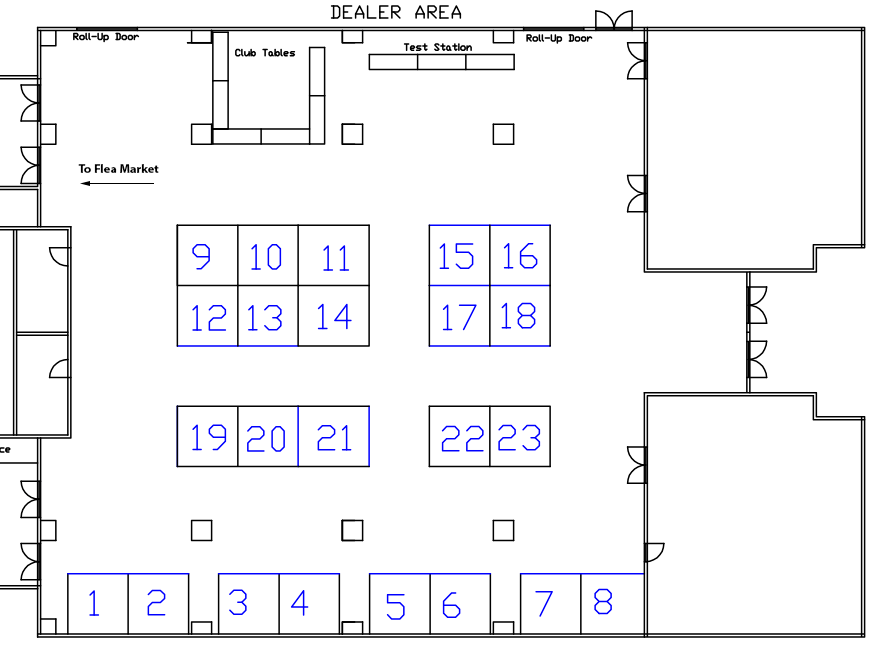

Related Posts



